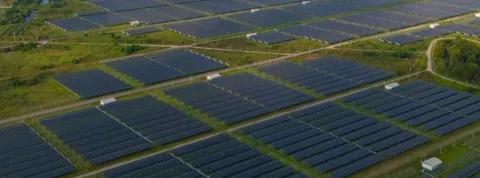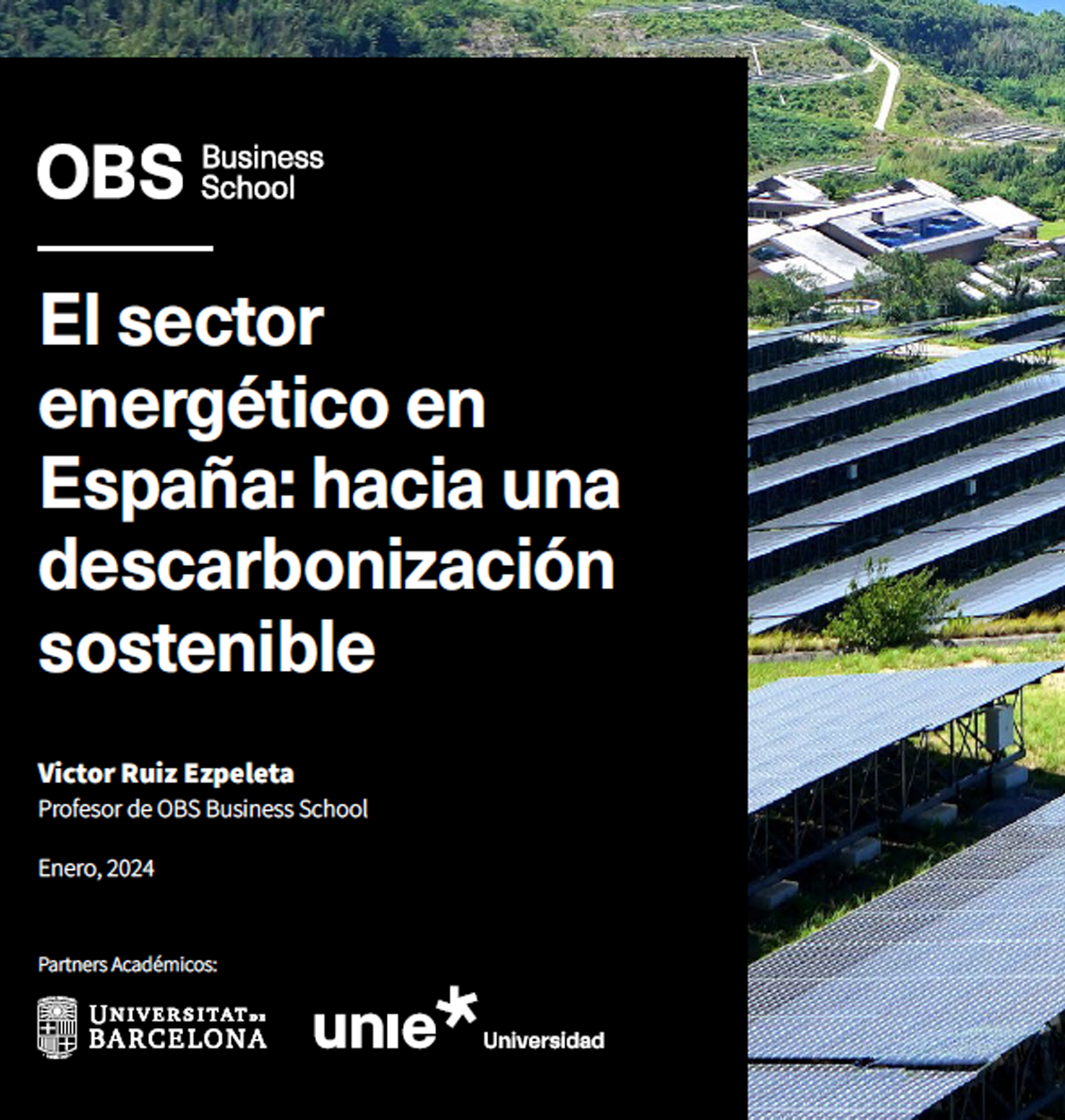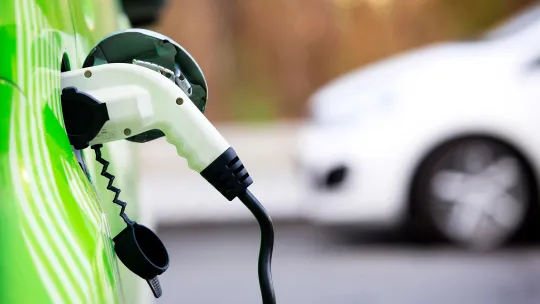
OBS Report: The energy industry in Spain, towards sustainable decarbonisation
Renewable energy production in Spain sets new records

- Spain maintains a renewable energy export balance of approx. In 2025, renewable energy production will exceed 149 TWh, its historical maximum, which would represent 56% of the mix. Wind power maintains its leadership.
- Castilla y León leads the energy transition in Spain, followed by Castilla-La Mancha, Andalusia, Aragón, Galicia and Extremadura. Together they generate 82% of the renewable energy produced in Spain. Cantabria, Madrid, the Balearic Islands, the Basque Country, La Rioja and the Canary Islands together generate only 3.7%. Madrid is the most deficient.
- The report proposes improving grid infrastructure to support the growth of renewables, addressing constraints associated with intermittency of sources, promoting green hydrogen and marine energy, fostering public-private partnerships and rationalising energy consumption.
- China is a world leader in renewable energy production, but integrating renewable energy into its national grid is one of the main challenges.
January 2025. We publish the report The energy industry in Spain, directed by Professor Víctor Ruiz Ezpeleta. It analyses the current situation in Spain, Europe, China and Latin America with regard to the main energy sources: electricity, nuclear, green hydrogen, fossil fuels, geothermal and wind power. The report also details the trends in 2025 and the challenges of the future.
The consolidation of renewable energies in 2024
Last year was, for Spain and Europe, a year of consolidation of renewable energies and a commitment to decarbonisation. Our country has surpassed 50% of energy production through renewables, with a clear advance in solar energy, where Spain is a privileged country with many possibilities ahead. Renewable energy production has experienced an increase of nearly 11% in a year that has set historical records. Photovoltaic solar energy, for its part, has risen to third place in the energy mix, overtaking combined cycle, while wind power once again leads with a 23% share. In terms of electricity demand, in Spain it has increased by nearly 1.5%.
By last November, renewables had contributed 137,785 GWh, surpassing their entire production of the previous year, 53.1% of the total peninsular production structure. Wind accounted for 24.5% of the total, followed by nuclear with 18.6%, combined cycle (17.2%) and hydro (14.2%). The forecast is that by 2025, renewable energy production will exceed 149 TWh, its historical maximum, which would represent 56% of the mix and a major advance towards the target of 81% set for 2030.
Wind maintains its leadership with 23% of generation, followed by nuclear (19%). Photovoltaic, with notable growth, occupies third position with 17% and a record production of 45 TWh, displacing combined cycle to fourth place. Hydro, meanwhile, closes the top 5 with 13%. The progress of renewables is due to the increase in installed capacity, which represents 64% of the generating fleet, and favourable weather conditions. Fossil technologies, on the other hand, continue to fall.
Spain maintains an export balance of renewable energy of approximately 10 TWh.
By Autonomous Communities
Castilla y León is leading the energy transition in Spain, generating 17% of the country's renewable energy. This gives it not only enough to cover its own needs, but also to export to other regions. It is followed by Castilla-La Mancha with 14% of total production, Andalusia, Aragon and Galicia with 13%, and Extremadura with 10%. This community has the largest surplus in relation to its domestic demand; in fact, if it were possible to store energy, the community could be supplied for almost three years with the production of just one. As the author points out:
Together, these six communities generate more than 82% of the renewable energy produced in Spain. Despite this, Andalusia can only meet 43% of its own electricity needs with what it generates.
In contrast, other regions such as Cantabria, Madrid, the Balearic Islands, the Basque Country, La Rioja and the Canary Islands generate only 3.7% of the country's renewable energy. The most extreme case is Madrid, whose annual production could only cover its electricity demand for six days. It is the community with the highest deficit. It is followed by the Basque Country and the Balearic Islands, which generate enough energy per year to be self-sufficient for 22 and 30 days respectively. These huge differences can be explained by the territorial area and population density. While Castilla y León and Extremadura have a population density of 25 inhabitants per square kilometre, the Community of Madrid has a population density of 856 people per square kilometre. In addition, industrial energy demand plays an important role, especially in regions such as the Basque Country and Catalonia, traditional engines of the country.
In recent years, the Community of Madrid has begun to approve more renewable projects; however, they are not without controversy. Environmental organisations and local communities criticise the landscape impact and the limited economic benefits they leave in the areas where they are installed. "The lack of state and regional planning has allowed companies to choose the most convenient locations for them, without considering the environmental or social effects", says Rosa Pardo, spokesperson for the Alianza Energía y Territorio (ALIENTE). The excesses committed by large companies in the implementation of renewable projects have led Spanish justice to order the dismantling of the largest solar plant in Europe located in Usagre, Badajoz, after declaring illegal the expropriation of the land where it is located.
The rise of self-consumption in Spain in 2023
Self-consumption is a profitable option for both households and businesses that provides economic stability in the face of geopolitical crises. In 2023, 1,706 MW of new self-consumption capacity was added in Spain. The industrial sector led this growth with 1,020 MW installed, followed by residential (372 MW) and commercial (291 MW). It is true that in the first quarters of 2024 it fell, but measures have been proposed to reverse this trend, such as collective self-consumption. This would require removing the obstacles that limit it: communication with multiple actors and a long and complex information and procedure.
Current challenges
The report considers it essential to improve grid infrastructure to support the growth of renewables, and also to address the limitations associated with the intermittency of sources such as solar and wind through advanced storage and management technologies.
Spain has the opportunity to promote innovative technologies such as green hydrogen and marine energy, which can diversify the country's energy matrix. Víctor Ruiz Ezpeleta says: "We can turn Spain into a strategic centre for renewable energy exports in Europe, taking advantage of its abundant solar irradiation and wind resources, but to do so it is necessary to foster collaboration between the public and private sectors". To achieve the objectives of the National Integrated Energy and Climate Plan (PNIEC), the report considers it essential to align the efforts of marketers, distributors and public institutions and offer solutions that are adapted to the country's urban environment.
China: undisputed world leader
Despite China's image as a polluter, and despite being the largest player in the global economy and the largest consumer of energy, it is playing a crucial role in the transition to a sustainable energy system. Its renewable energy production capacity is 339 GW (180 GW solar and 159 GW wind), far exceeding the 40 GW currently under construction in the United States. The country is making great strides towards its energy goals and is expected to reach 1,200 GW of installed capacity by the end of 2024, achieving this milestone six years earlier than the government initially planned. But integrating renewable energy into the national grid is one of the main challenges it faces despite its impressive achievements.
China has pledged to peak its carbon emissions by 2030 and achieve carbon neutrality by 2060, but this leadership is not without controversy. Both Washington and Brussels have accused Beijing of unfair competition practices in the renewables sector and of encouraging ‘industrial overcapacity’ in solar panel manufacturing. The fact is that China already has considerable influence in international climate negotiations. And the success of its transition will be crucial not only for achieving its own climate goals, but also for influencing global energy and environmental stability.
Content written by:
Carmen García-Trevijano
OBS Business School's Press Office



